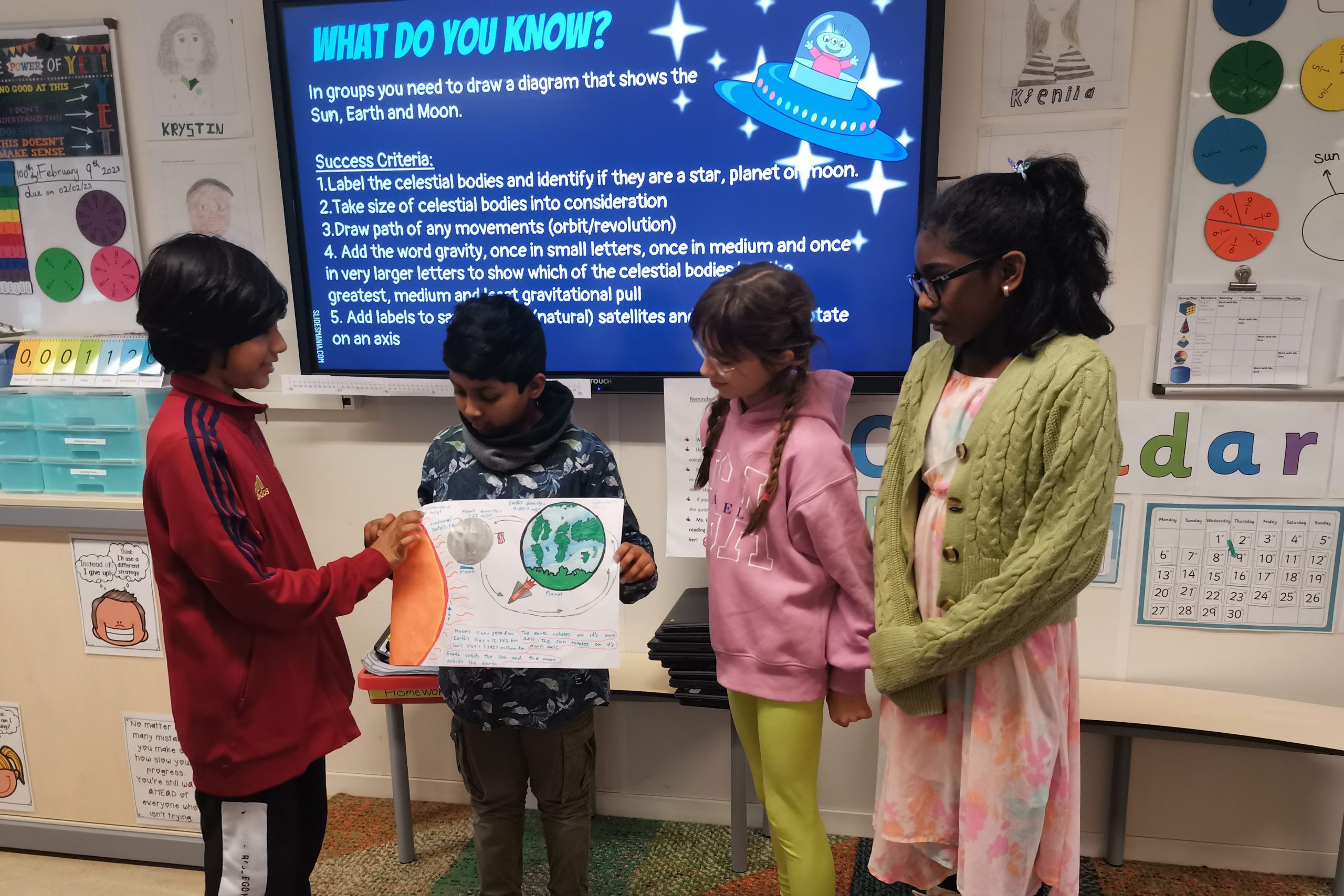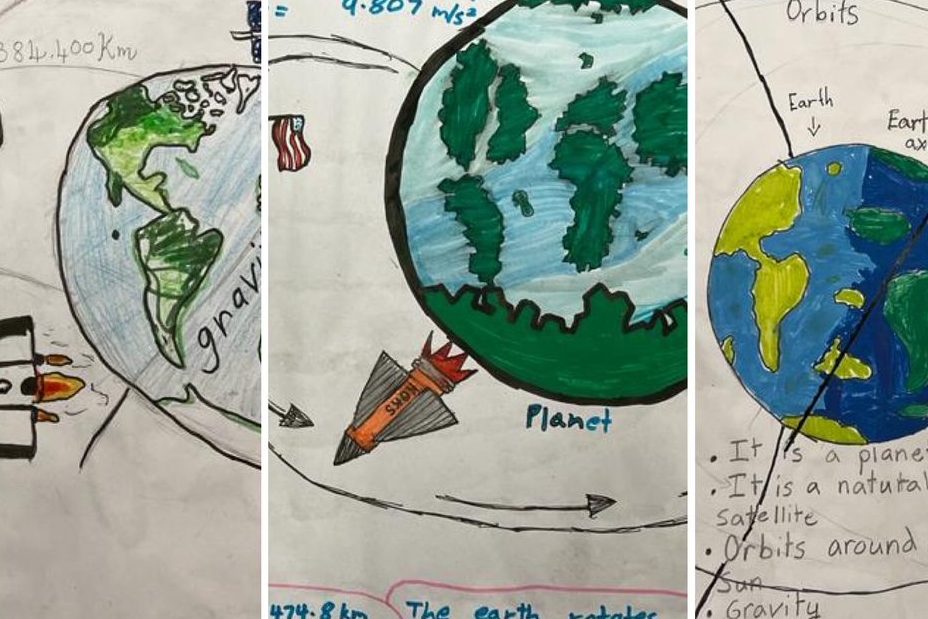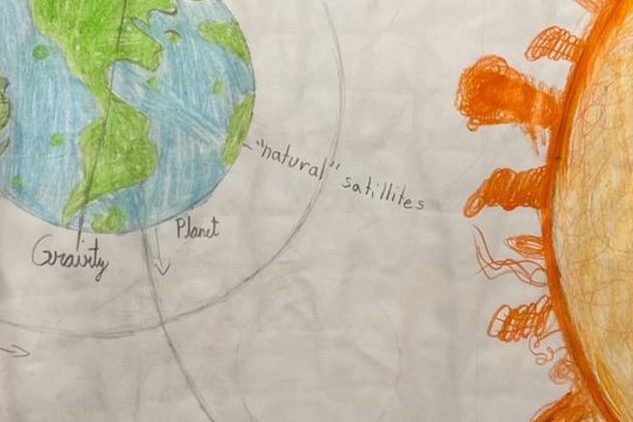
Relationship between Sun, Earth and Moon
The planet moves around the Sun, and the Moon rotates around the Earth. Students this week have been researching more about their IPC Unit Space Scientists and in particular the relationship between the Sun, the Earth and the Moon.
By Gina van der Vliet, Group 7 Teacher
Describe the relationships between the three celestial bodies
Children were given a learning objective and had to present, name and describe the relationships between these three celestial bodies. In a group, the students together had to draw diagrams that showed the Sun, Earth and Moon. 5 success criteria were defined;
- Label the celestial bodies and identify if they are a star, planet or moon;
- Take size of celestial bodies into consideration;
- Draw path of any movements (orbit/revolution);
- Add the word gravity, once in small letters, once in medium and once in very larger letters to show which of the celestial bodies has the greatest, medium and least gravitational pull;
- Add labels to say which are (natural) satellites and which bodies rotate on an axis.

Each group did so well using a combination of chrome books and books from the library to research and compare facts about the Sun, Earth and Moon. Particular attention was paid to the reliability of the sources.
Over the next week we will dive more into how we know that the earth rotates by finding evidence how a shadow changes, as well as the orbits, rotations and moons of other planets in our galaxy. Feel free to ask us about this!

